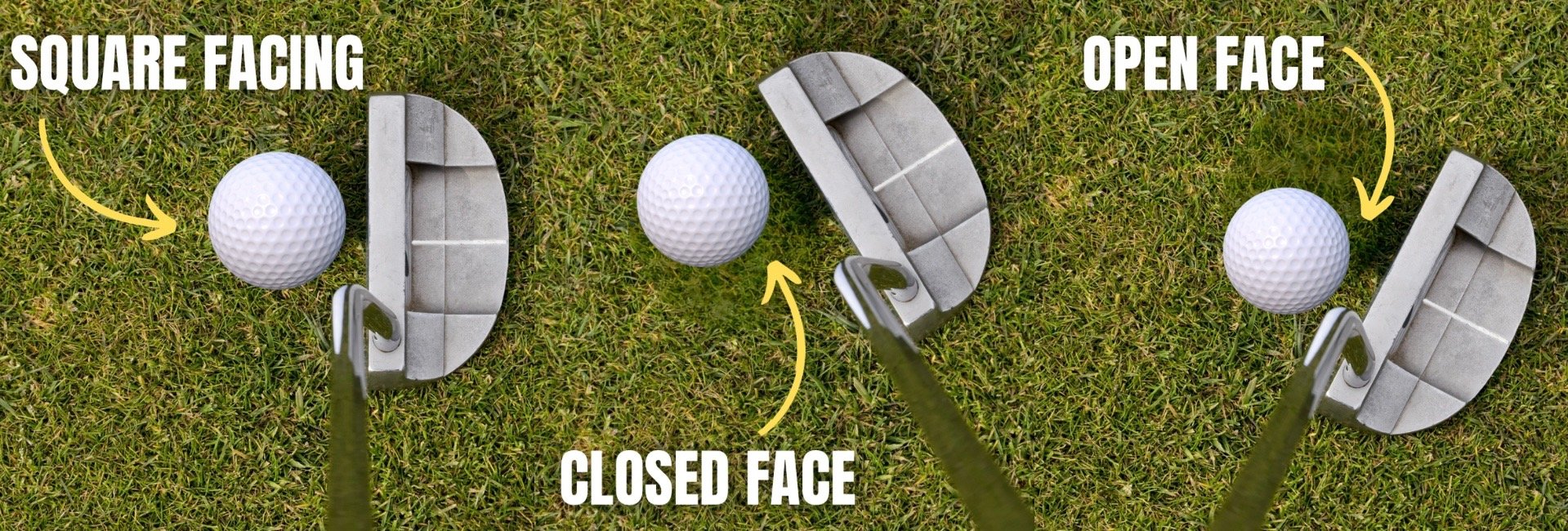Why Hand Speed and Clubface Control Matter More Than Swing Speed in Golf
Most golfers have been told, “Swing faster for more distance.” And while there’s some truth to that, it’s not the whole story.
If you’ve ever swung out of your shoes trying to keep up with the long hitters on YouTube or your Saturday foursome—only to send the ball screaming into the trees—you already know this firsthand: swing speed without control is just chaos in motion.
At Square Launcher Golf, we believe there’s a better way. One that puts accuracy, feel, and consistency first—without sacrificing distance. That’s why we developed the Square Launcher Xccelerator and our Split Hand Throw Squaring Routine—a system that trains you to actually square the clubface and unlock the kind of consistency that makes your whole game better.
Let’s break down what the science says—and how the Square Launcher system helps you put it into practice.
The Real Drivers of Performance: It’s Not Just Speed
There’s no doubt that swing speed helps generate power. But research shows that swing speed alone doesn’t guarantee distance or accuracy. In fact, most amateur golfers who chase speed end up overswinging, losing their rhythm, and sending shots offline.
The truth? It’s how efficiently you transfer that speed to the ball—and that comes down to:
Hand speed and control
Clubface angle at impact
Centered contact
Timing and rhythm
You could swing at 110 mph, but if your clubface is open or your contact is off-center, you’re not going to see the results you want.
Why Hand Speed Matters (But Only When Controlled)
Hand speed refers to how fast your hands move through the swing. Yes, faster hand movement can contribute to clubhead speed—but it’s not a direct 1:1 relationship.
Studies show that:
Top players actually decelerate their hands right before impact, allowing the clubhead to whip through the ball.
Simply trying to move your hands faster doesn’t necessarily create more clubhead speed—and often leads to poor strikes.
Hand path length (i.e., how far your hands travel in the backswing) also affects speed—but longer paths can make squaring the face harder for amateur players.
The takeaway? It's not just about how fast your hands move—it's about how well they guide the clubface into impact.
Clubface Angle: The Silent Killer (or Secret Weapon)
Here’s the stat that should change your practice routine:
Where the ball starts—and where it ends up—is mostly determined by the clubface angle at impact.
If your clubface is just a few degrees open or closed, it doesn’t matter how fast you're swinging. You’re either slicing into the woods or pulling it into the next fairway.
This is also where your smash factor comes into play—the ratio of ball speed to clubhead speed. A high smash factor means you’re getting the most out of your swing. And to do that, you need:
Centered contact
A square clubface
Efficient energy transfer
Smash Factor Benchmarks:
Optimal Smash Factor by Club:
Driver: 1.45 – 1.50
6-Iron: 1.35 – 1.40
Wedge (PW): 1.20 – 1.30
If your smash factor is lower than expected? It's probably not your swing speed—it’s your clubface control.
The Hands: Your Most Powerful (and Underrated) Tool
Your hands are the only point of contact with the club. They’re in charge of:
Squaring the face
Controlling the release
Guiding the club along the correct path
Transferring power from your body to the ball
The wrists, in particular, play a massive role:
Lead wrist flexion (bowing) closes the face.
Extension (cupping) opens it.
Forearm rotation helps with squaring and releasing the club.
This is why feeling the right hand action is essential—and where our Split Hand Throw Squaring Routine comes in.
The Underhand Throw: A Game-Changing Analogy
Think about tossing a ball underhand. It’s a natural motion most people can do without overthinking:
Your body moves in sequence.
Your wrist snaps at just the right time.
Your dominant hand leads the release.
That’s almost exactly what a good golf swing should feel like. That’s the philosophy behind our Split Hand Throw Squaring Routine. It mimics the underhand throw, training you to:
Feel the correct wrist and forearm rotation
Learn how to square the clubface naturally
Build muscle memory for a smooth, controlled release
How the Square Launcher Xccelerator Helps You Train
The Square Launcher Xccelerator is more than just a swing aid. It’s a portable, on-club training tool that reinforces:
The feel of the trailing hand release
A square clubface at impact
Tension-free rhythm
Better clubhead stability and centered contact
Controlled hand speed so it increases and slows down at the right points in your swing
✅ Why this matters: Most amateurs speed up at the wrong time. The Xccelerator teaches you to accelerate through impact and naturally decelerate when needed—just like the pros do.
Use it at the range, during warmups, or even on the course to stay connected to that feeling of control and consistency. Used together with the Split Hand Throw Squaring Routine, the Xccelerator is designed to synchronize the impact of hand speed, swing speed, and ball speed.
What Golfers Are Saying
Golfers who’ve adopted the Square Launcher system have reported:
✅ More consistent ball striking
✅ Better accuracy with all clubs
✅ Increased distance (without overswinging)
✅ A clearer feel for what a “square clubface” actually feels like
Final Thoughts: Control > Chaos
Speed is sexy—but control is what wins rounds.
If you’re serious about improving your game, don’t just chase swing speed. Train your hands. Learn to square the clubface. Build feel and consistency.
The Square Launcher Xccelerator and Split Hand Throw Squaring Routine are designed to help you do exactly that—with proven biomechanics and a feel-based approach rooted in the natural motion of throwing.
Ready to Play More Consistent, Powerful Golf?
👉 Shop the Square Launcher Xccelerator
👉 Learn the Split Hand Throw Squaring Routine








